Some inevitable steps during water treatment process
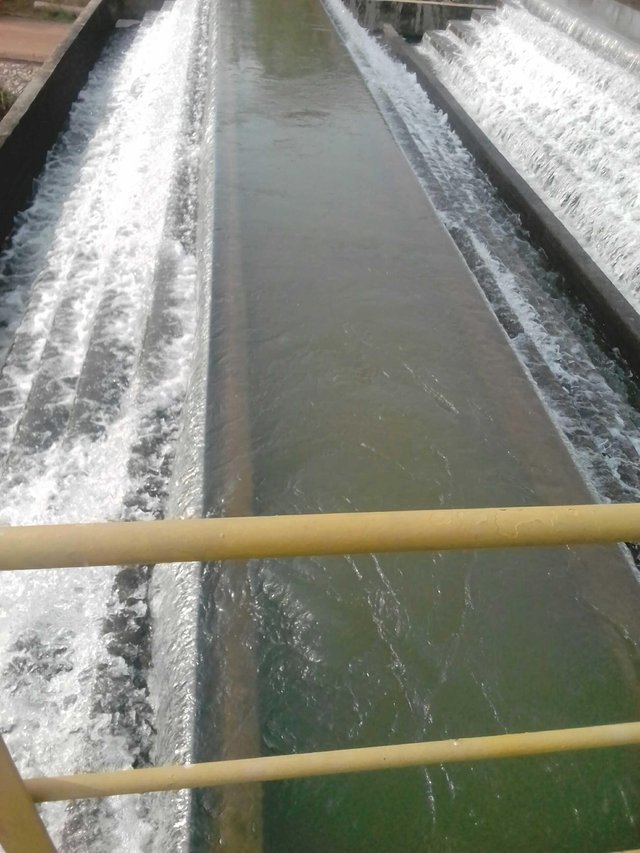
**AERATION**
Aeration is a unit process in which water and air are brought into intimate contact with one another. After the clarified water is transported through the counting tray from the solids contact clarifiers (flocculation and sedimentation chamber), it flows through a channel and links to another chamber known as the aeration chamber. Here, aeration is done to eradicate odour and taste present in the water. Aeration is also done for the following reasons.
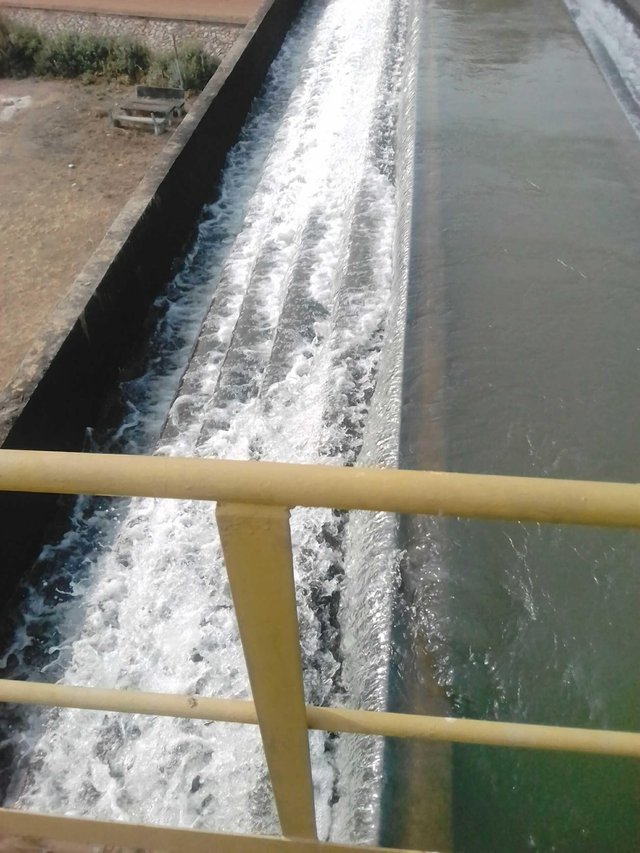
Iron and Manganese removal: Iron and Manganese in the raw water occur as soluble ferrous and manganous bicarbonates. In the aeration process, the water is saturated with oxygen to promote the following reactions:
4Fe(HCO3)2 + O2 + 2H2O = 4Fe(OH)3- +8CO2
Ferrous bicarbonate oxygen water ferric hydroxide carbon dioxide
2Mn(HCO3)2 + O2 = 2MnO2 + 4CO2- + 2H2O
Manganese oxygen manganese carbon water bicarbonate dioxide dioxide
The oxidation products, ferric hydroxide and manganese dioxide, are insoluble. After aeration, they are removed by filtration.
Dissolved gas reduction: Aeration helps in the reduction of carbon dioxide, CO2 (decarbonation), reduction of ammonia gas (NH3) and reduction of hydrogen sulphide gas (H2S) to remove taste and odour.These gases ionize when dissolved in water.
H2O + CO2 = H+ + HCO3-
H2S = H+ + HS-
H2O + NH3 = NH4+ + OH-
This is cascade aerator which consists of a series of steps that the water flows over. In all cascade aerators, aeration is accomplished in the splash zones. The aeration action is similar to a flowing stream. Splash areas are created by placing blocks across the incline. They are the oldest and most common type of aerators.
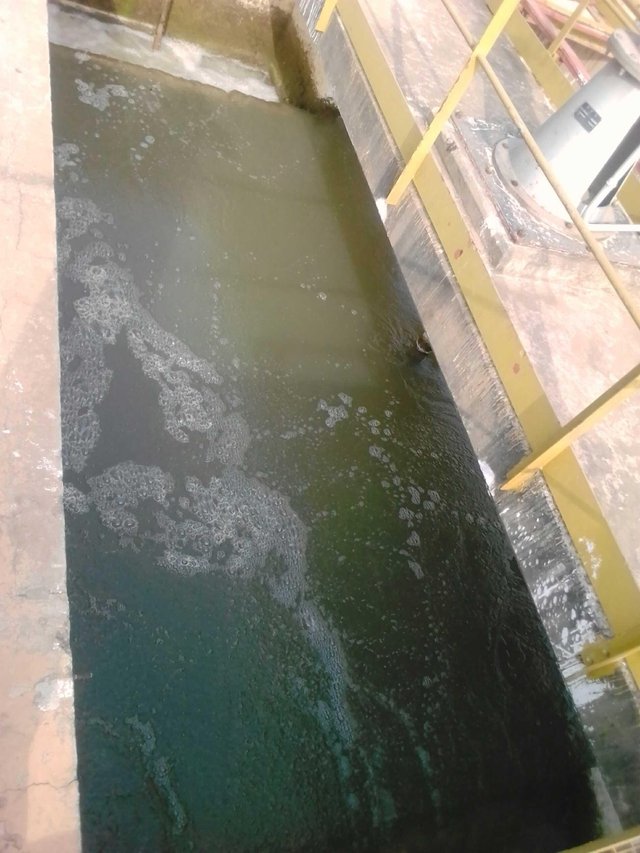
*Cascade Aerator*
In addition to aerating the biofilter drainage following irrigation events, it would also be possible to aerate the grow-out tank/pool volume without the water passing thru the sand (any hour of the day/night if desired). Pour/move water onto the top of the cascade directly by whatever means is available.
Also, do try to shade the cascade from direct sunlight. This reduces evaporation ‘loss’ and heat gained by the water.
Further, even with access to electrical energy for aeration, adding a cascade can increase DO saturation and/or reduce your energy bill.

**FILTRATION**
Filtration in a water treatment plant is any of various mechanical, physical or biological operations that separate solids (suspended) from the water by using a filter medium through which only the water can pass. The fluid that passes through is called filtrate. When aerated water from the aeration tank flows out, it goes directly to the filtration tank which uses quartz sand as its filter medium. While coagulation, flocculation and sedimentation play important roles and will remove the bulk of the particles from the raw water, they alone will not meet the strict quality standards that are required of drinking water. Filtration is the only process that is capable of removing very small particles down to the level required.
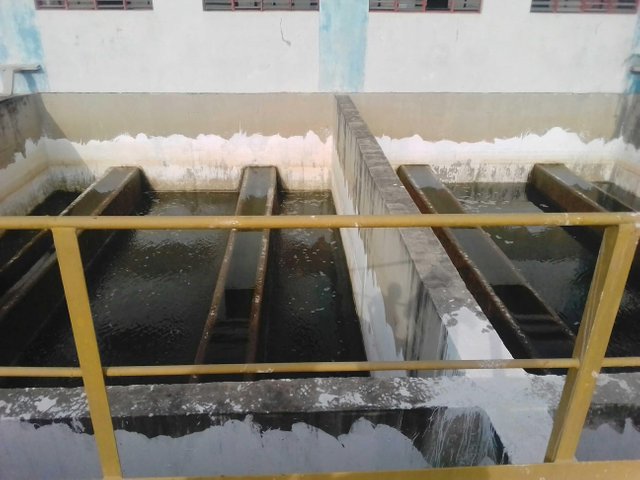
Filtration takes place by allowing the water flow through the sand media thereby trapping suspended particles within the sand layers and if this builds up over time, it could lead to clogging of the beds with accumulation of suspended particles and would inhibit the filtrating properties of the media and could also render the filtrating process ineffective. So a technique is usually used as a means of cleaning the media to remove the clogged portions of the filter media. This technique is termed backwashing
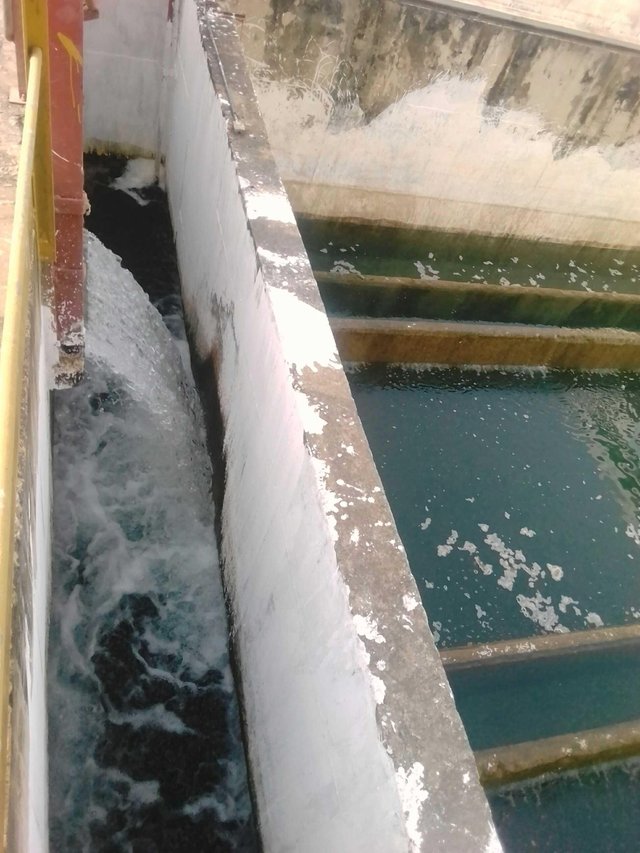
Filter Media
**BACKWASHING**
Backwashing is a method of reversing the flow of water through the filter media, and with the aid of introducing compressed air through an air scour into the filter medium enough to agitate the sands against each other so trapped particles can be released and carried back up by the reverse flow of water followed by a rinse water until the turbidity of the backwashed water is below an established value.
The higher backwash rate firstly subjects the grain to hydraulic shear forces much larger than that encountered during filtration and the deposit is sloughed from the media grains. The backwash process, which pushes water through the bed from below at roughly three times the normal filtration rate, accomplishes the goal.
The degree of backwash attained by water alone is often not enough to properly backwash the media. It then becomes necessary to apply additional force to the media grains to release more of specific deposit (clogged particles).
The way this was achieved in the phase I plant was by introducing bubbled air through the bed; the air scour process. As individual bubble travel through the bed, the grains have to continuously move to and fro to let the air bubbles pass. In this way the grains rub on each other, which is a more effective way to clean the grain (as it makes more sense to clean your hands by scrubbing than just rinsing).
The air is first applied, followed by water. As the air starts to bubble through the bed, the bed compacts and the air start to “channel” along fixed paths. This happens within a minute after starting the backwash and reduces the degree of rubbing amongst the media grain; an effect that is clearly not desired.
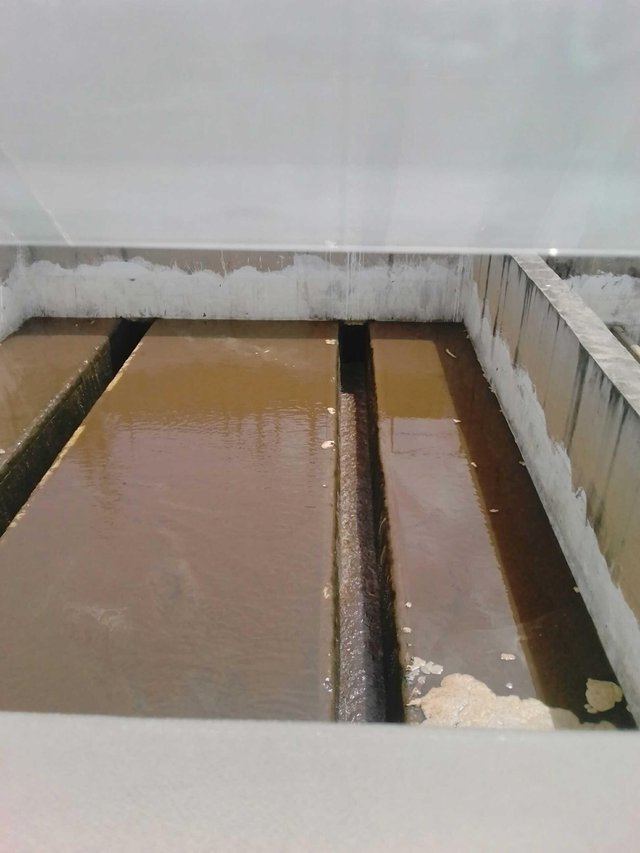
Factors that influence the efficiency of backwashing
A damaged or partially blocked under-drain system will not distribute the wash water or the air evenly across the media bed, leading to uneven rates and poor backwash efficiency.
Areas of clogged media will not be expanded or cleaned during the backwash cycle, reducing both the filtration and backwash efficiency.
Colder water is more viscous and will expand the bed slightly more, leading to marginally better backwash efficiency.
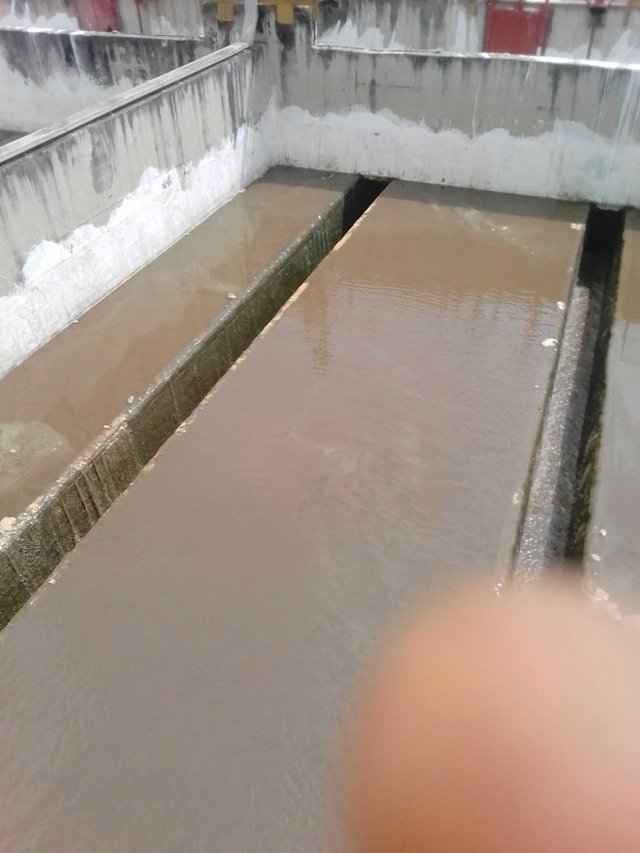
State of the water in the filter media during backwashing
**DISINFECTION**
The objective of water treatment is to produce a final product that is microbiologically and chemically safe for consumption as well as aesthetically acceptable. Disinfection of the treated water is very essential as it helps to destroy pathogens and also improves the general microbiological quality of the water, thereby eliminating the possibility of water-borne diseases.
Some common water-borne diseases prevented by disinfection:

*(sodium hypochlorite or calcium hypochlorite)* is used as the major disinfectant. When Chlorine is added to water, it has an immediate and disastrous effect on most forms of microscopic life.Two reactions take place when chlorine is added to water. They are:
*Hydrolysis Reaction:*
NaOCl + H2O = HOCL + NaOH
Sodium water hypochlorous sodium
Hypochlorite acid hydroxide
*Ionization Reaction:*
HOCL = OCl- + H+
Hypochlorite ion
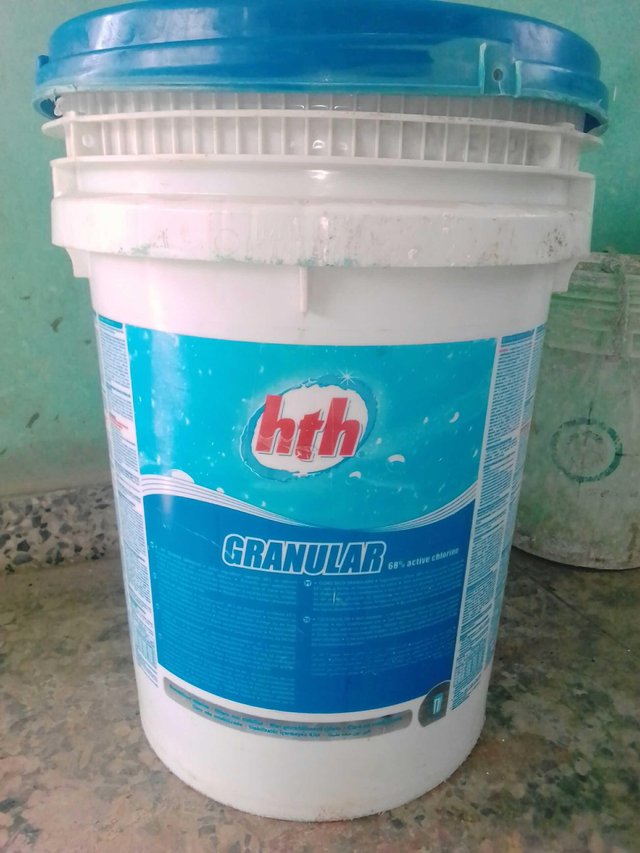
Taken together, the concentration of the hypochlorous acid and the hypochlorite ion are defined as the free available chlorine. The amount of chlorine required depends on the amount of reducing inorganic and organic matter in the water.
A larger chlorine residual may cause undesirable taste; a smaller one cannot be relied upon to assure the safety of treated water. Liquid chlorine is obtained in pressure containers and is applied to the water using a device known as chlorinator.
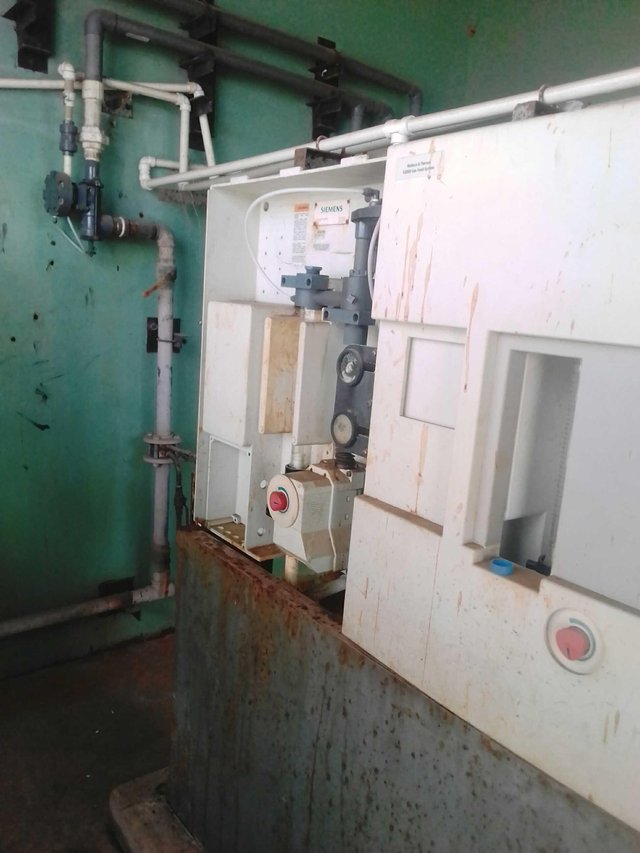
Disinfection unit
Do you work in a water treatment plant?
Are the pictures yours? You should credit them somewhere, either under each picture or at the end of the article!
The same goes for the text. Even if you work in a water treatment plant, Steemit and science in general is a place where you need to provide proof for what you are saying to by crediting or at least pointing out to another source of information,so you are providing an objective point of view.
If you are on discord on SteemSTEM and you want to better yourself, send me a message and I can give you a quick list of tips and follow you for a bit, until you get the hang of it and start growing :P
Hmm
Are you the same person as @fagbems?
Hello @fagbems, welcome to steemstem and steemit. You should always reference images used in a post (unless images are yours then you should indicate that in the article). For guidelines on how to be a steemstem member, please visit this post here and on the proper use of images devoid of copyright issues click here. You can also join us in discord by clicking here.